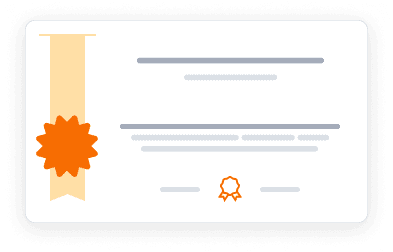Discover the scientific and technological achievements of ancient Korea's Silla dynasty through analysis of its cultural monuments and artifacts.
Discover the scientific and technological achievements of ancient Korea's Silla dynasty through analysis of its cultural monuments and artifacts.
This course examines the advanced scientific and technological developments of Korea's ancient Silla dynasty through detailed analysis of its major cultural heritage sites. Students explore the engineering principles behind iconic structures like Bulguksa Temple, Seokguram Grotto, and Cheomseongdae Observatory, as well as metallurgical achievements like the Sacred Bell of Great King Seongdeok. The curriculum demonstrates how ancient Korean civilization made significant contributions to science, architecture, astronomy, and metallurgy, challenging the notion that technological advancement was primarily a Western phenomenon.
4.8
(56 ratings)
2,324 already enrolled
Instructors:
English
What you'll learn
Understand Silla dynasty's technological achievements
Analyze ancient architectural engineering principles
Explore early astronomical observation methods
Examine historical metallurgical techniques
Appreciate ancient Korean scientific knowledge
Connect historical innovations to modern science
Skills you'll gain
This course includes:
171 Minutes PreRecorded video
6 assignments
Access on Mobile, Tablet, Desktop
Batch access
Shareable certificate
Get a Completion Certificate
Share your certificate with prospective employers and your professional network on LinkedIn.
Provided by

Top companies offer this course to their employees
Top companies provide this course to enhance their employees' skills, ensuring they excel in handling complex projects and drive organizational success.





There are 6 modules in this course
The course provides a comprehensive analysis of scientific and technological achievements in ancient Korea's Silla dynasty. Through examination of major cultural heritage sites and artifacts, students learn how advanced engineering, astronomical knowledge, and metallurgical techniques were used to create remarkable monuments and objects. The curriculum combines historical context with modern scientific analysis to demonstrate the sophisticated technological capabilities of this ancient civilization.
Bulguksa
Module 1 · 36 Minutes to complete
Sci-Tech in the Silla Cultural Heritage
Module 2 · 47 Minutes to complete
Poseokjeong
Module 3 · 37 Minutes to complete
Seokguram Grotto
Module 4 · 30 Minutes to complete
The Sacred Bell
Module 5 · 26 Minutes to complete
The Metalcrafts in Silla
Module 6 · 31 Minutes to complete
Fee Structure
Payment options
Financial Aid
Instructors
Pioneering Scholar in Physics and History of Science
Im, Gyeong Soon is a distinguished professor at Pohang University of Science and Technology (POSTECH), renowned for his contributions to the fields of physics and the history of science. He earned his Bachelor’s degree in Physics from Seoul National University in 1984, followed by a Master’s degree in Physics and History of Science in 1986 from the same institution. His academic journey culminated in a Doctorate in the History of Science from the University of Hamburg in Germany in 1991. Im's professional career spans several notable positions, including a post-doctoral fellowship at the University of California, Berkeley, and various roles at POSTECH where he has been instrumental since 1994, including serving as the Director of the Science Culture Research Center and the Center for the Advancement of Science & Technology. His interdisciplinary expertise not only enriches his teaching but also fosters a deeper understanding of the scientific heritage within cultural contexts.
Distinguished Mathematician and Leader in Geometric Research
Kim, Kang-Tae is a prominent professor of mathematics at Pohang University of Science and Technology (POSTECH) and serves as the Director of the Science Research Center for Geometry and its Applications. He earned his B.S. and M.S. in Mathematics from Seoul National University, followed by a Ph.D. from the University of California, Los Angeles. With a career that spans several decades, Kim has held influential academic positions, including serving as an editor for the Journal of Geometric Analysis and as an executive editor for Complex Analysis and its Synergies, both published by Springer-Verlag. His research focuses on complex geometry, particularly in the areas of automorphism groups of complex domains and phase transformations. Kim's extensive contributions to mathematics have been recognized through various awards, including the D.I. Mathematician Award from the Korean Mathematical Society, highlighting his impact on both the academic community and the advancement of mathematical sciences.
Testimonials
Testimonials and success stories are a testament to the quality of this program and its impact on your career and learning journey. Be the first to help others make an informed decision by sharing your review of the course.
Frequently asked questions
Below are some of the most commonly asked questions about this course. We aim to provide clear and concise answers to help you better understand the course content, structure, and any other relevant information. If you have any additional questions or if your question is not listed here, please don't hesitate to reach out to our support team for further assistance.
-1732210295881.png&w=128&q=75)

-1731385119558.png&w=3840&q=75)


-1731385119558.png&w=256&q=75)